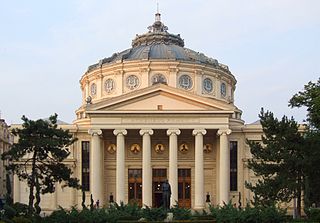
Bucharest is the capital and largest city of Romania. The metropolis stands on the River Dâmbovița in south-eastern Romania. Its population is officially estimated at 1.76 million residents within a greater metropolitan area of 2.3 million residents, which makes Bucharest the 8th most-populous city in the European Union. The city area measures 240 km2 and comprises 6 districts (Sectoare), while the metropolitan area covers 1,811 km2. Bucharest is a beta global city, a major cultural, political and economic hub, and the country's seat of government.

The Palace of the Parliament, also known as the House of the Republic or People's House/People's Palace, is the seat of the Parliament of Romania, located atop Dealul Spirii in Bucharest, the national capital. The Palace reaches a height of 84 m (276 ft), has a floor area of 365,000 m2 (3,930,000 sq ft) and a volume of 2,550,000 m3 (90,000,000 cu ft). The Palace of the Parliament is one of the heaviest buildings in the world, weighing about 4,098,500 tonnes, also being the second largest administrative building in the world. The building was designed and supervised by chief architect Anca Petrescu, with a team of approximately 700 architects, and constructed over a period of 13 years (1984–97) in modernist Neoclassical architectural forms and styles, with socialist realism in mind. The Palace was ordered by Nicolae Ceaușescu (1918–1989), the president of Communist Romania and the second of two long-ruling heads of state in the country since World War II, during a period in which the personality cult of political worship and adoration increased considerably for him and his family.
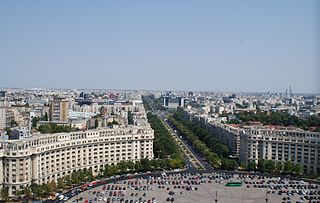
Centrul Civic is a district in central Bucharest, Romania, which was completely rebuilt in the 1980s as part of the scheme of systematization under the dictator Nicolae Ceaușescu, which included the construction of new civic centres in the Romanian cities. Bucharest Civic Centre was planned to become the new political-administrative center of Communist Romania.

University Square is located in Bucharest city centre, near the University of Bucharest. It is served by Universitate metro station.
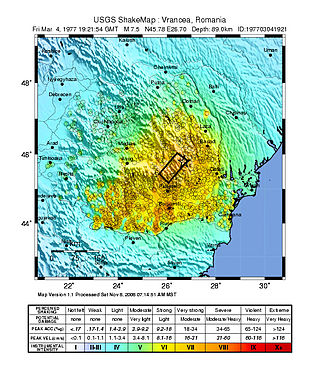
The 1977 Vrancea earthquake occurred on 4 March 1977, at 21:22 local time, and was felt throughout the Balkans. It had a magnitude of 7.5, making it the second most powerful earthquake recorded in Romania in the 20th century, after the 10 November 1940 seismic event. The hypocenter was situated in the Vrancea Mountains, the most seismically active part of Romania, at a depth of 85.3 km.

General Gheorghe Magheru was a Romanian revolutionary and soldier from Wallachia, and political ally of Nicolae Bălcescu.
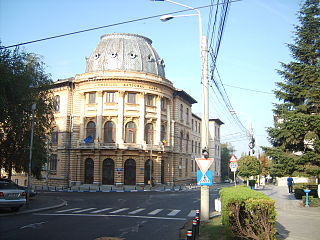
The Carol I National College is a high school located in central Craiova, Romania, on Ioan Maiorescu Street. It is one of the most prestigious secondary education institutions in Romania. Between 1947 and 1997 it operated under the name of Nicolae Bălcescu High School.

Grădina Icoanei is a small park in central Bucharest, situated not far away from Piața Romană and Bulevardul Magheru. The park, located next to Gheorghe Cantacuzino Plaza in Sector 2 of the city, was inaugurated in 1873.

Dorobanți is a neighborhood in Sector 1, Bucharest. The neighborhood is dominated by red brick buildings and glass buildings. Main intersections/squares are Perla, Dorobanți Square, Alexandru Lahovari Square, Charles de Gaulle Square, and Quito Square. Main streets are Calea Dorobanților, Iancu de Hunedoara Avenue, Lascăr Catargiu Boulevard, and a small part of Ștefan cel Mare Boulevard. The district features many embassy buildings, and local cafés are regarded as meeting places of Bucharest's nouveau riche.
Romanian architecture is very diverse, including medieval, pre-World War I, interwar, postwar, and contemporary 21st century architecture. In Romania, there are also regional differences with regard to architectural styles. Architecture, as the rest of the arts, was highly influenced by the socio-economic context and by the historical situation. For example, during the reign of King Carol I (1866–1914), Romania was in a continuous state of reorganization and modernization. In consequence, most of the architecture was designed by architects trained in Western European academies, particularly the École des Beaux-Arts, and a big part of the downtowns of the Romanian Old Kingdom were built during this period.

The Patria Cinema, located at 12-14 Bulevardul Magheru, was among the best-known movie theatres in Bucharest, Romania. It is housed in Horia Creangă's modernist 10-story ARO building, designed in 1929 and completed in 1931. It was closed in November 2015, due to seismic risk.
Horia Creangă was a Romanian architect and key figure of the modernist movement in Romania. Described as "the true founder of the modernist age" in his native county, he is best known as the designer of the first large scale modernist building in Romania, the ARO building on Magheru Boulevard, Bucharest, completed in 1931.

Carlton Bloc was a residential bloc located in Bucharest, Romania, at 9 Nicolae Bălcescu Boulevard, completed in October 1936. Having 14 floors and a height of 47 metres (154 ft), it was the tallest building in the capital until it completely collapsed in 1940 in an earthquake.

Bulevardul Unirii is a major thoroughfare in central Bucharest, Romania. It connects Constitution Square with Alba Iulia Square, and also runs through Union Square. The Constitution Square end features the Palace of the Parliament, which began construction simultaneously with the boulevard as an architectural unit.
Piața Constituției is one of the largest squares in the centre of Bucharest, Romania. The square is standing face-to-face with the Palace of the Parliament and it is bisected by Bulevardul Unirii and by Bulevardul Libertății.
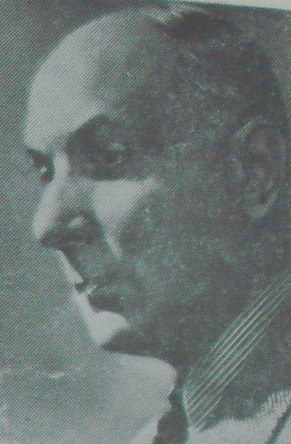
Duiliu Marcu was a Romanian architect, one of the most well known and prolific of the interwar period. With a career spanning from 1912 to 1966, he is said to have designed 150 public and private projects across Romania, his work reflecting the evolution of local architecture in the first half of the 20th century from French Renaissance, though Neo-Romanian to modernism. Though also designing private villas and apartments, he designed some of the major interwar public buildings in the country, including the Timișoara Theatre, the Elisabeth Palace in Bucharest for the royal family, and the Victory Palace, which now houses the office of the Prime Minister.
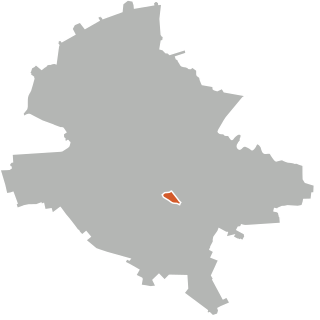
Tineretului is a small neighborhood in south Bucharest, Romania in Sector 4, close to the city center, named after the nearby Tineretului Park. It is one of the preferred neighborhoods by people seeking to buy an apartment. This is due to the well established public transportation, two nearby parks; along with banks, commercial spaces and schools. In 2015 there were 17,981 people registered living in this area.
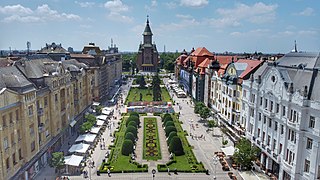
The Victory Square, known until 1990 as the Opera Square, is the central square of Timișoara. It is the place where Timișoara was proclaimed on 20 December 1989 the first city free of communism in Romania. It was a main boulevard, transformed into a square after the closure of the southern side by the construction of the Metropolitan Cathedral. The opposite poles of the square consist of the Opera to the north and the Metropolitan Cathedral to the south. From the Opera to the Cathedral the promenade on the right is called Corso, and the one on the left is called Surogat. Both have protected architectural ensembles of local historical importance.

St. George Square is a small urban square in the historic center of Timișoara. The place was known in the past as Seminary Square; there was first a Catholic church, which later became a mosque during the Ottoman occupation, and after the installation of the Austrian administration the building was handed over to the Jesuits who opened a new church, dedicated to St. George. Surrounded by imposing buildings, the square has long been the spiritual, financial and cultural center of the fortress of Timișoara.

Romanian Revival architecture is an architectural style that has appeared in the late 19th century in Romanian Art Nouveau, initially being the result of the attempts of finding a specific Romanian architectural style. The attempts are mainly due to the architects Ion Mincu (1852–1912), and Ion N. Socolescu (1856–1924). The peak of the style was the interwar period. The style was a national reaction after the domination of French-inspired Classicist Eclecticism. Apart from foreign influences, the contribution of Romanian architects, who reinvented the tradition, creating, at the same time, an original style, is manifesting more and more strongly. Ion Mincu and his successors, Grigore Cerchez, Cristofi Cerchez, Petre Antonescu, or Nicolae Ghica-Budești declared themselves for a modern architecture, with Romanian specific, based on theses such as those formulated by Alexandru Odobescu around 1870:
"Study the remains – no matter how small – of the artistic production of the past and make them the source of a great art (...) do not miss any opportunity to use the artistic elements presented by the Romanian monuments left over from old times; but transform them, change them, develop them ..."























